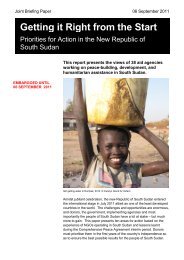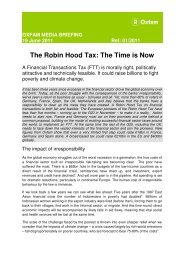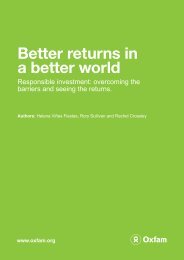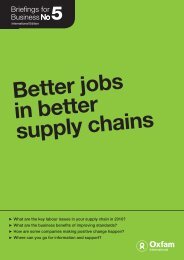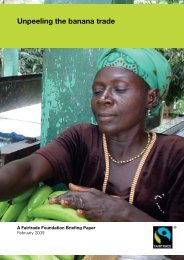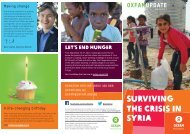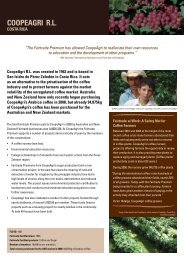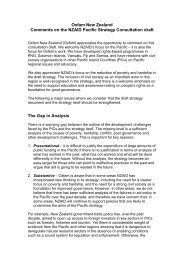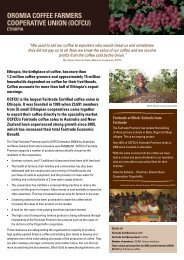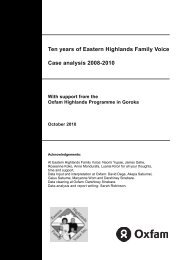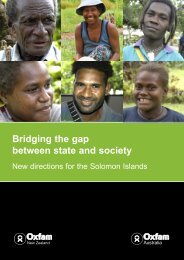Growing a Better Future - Oxfam International
Growing a Better Future - Oxfam International
Growing a Better Future - Oxfam International
- No tags were found...
Create successful ePaper yourself
Turn your PDF publications into a flip-book with our unique Google optimized e-Paper software.
In this age of interdependence, more efficient, equitableand resilient forms of human development are for the firsttime not only desirable. They are essential.We face three interlinked challenges in an age of growingcrisis: feeding 9 billion people without wrecking theplanet; finding equitable solutions to enddisempowerment and injustice; and increasing ourcollective resilience to shocks and volatility. No ‘silverbullet’ technology or policy will make these challengesvanish.The good news is that practical solutions are both urgentand available – from simple common sense acts we canall take, to bold shifts in how we manage sharedresources and value social progress. They are good forproducers, good for consumers, and good for the planet.Their benefits can be shared by the many, not just thefew, and they are built to be resilient in the long run.<strong>Growing</strong> a better future will take all the energy,ingenuity and political will that humankind can muster.If the best solutions are to win out, we must mountpowerful campaigns to win significant reforms in howour societies manage common threats and resourcesand create platforms for opportunity. From globalnegotiations to national decision making, we mustwork for three big shifts:• First, we must build a new global governance to avertfood crises. Governments’ top priority must be to tacklehunger and reduce vulnerability – creating jobs andinvesting in climate adaptation, disaster risk reduction,and social protection. <strong>International</strong> governance – oftrade, food aid, financial markets, and climate finance– must be transformed to reduce the risks of futureshocks and respond more effectively when they occur.• Second, we must build a new agricultural future byprioritising the needs of small-scale food producersin developing countries – where the major gains inproductivity and resilience can be achieved.Governments and businesses must adopt policiesand practices that guarantee farmers’ access tonatural resources, technology and markets. And wemust reverse the current gross misallocation ofresources which sees the vast majority of public moneyfor agriculture flow to agro-industrial farms in the North.• Third, we must build the architecture of a newecological future, mobilising investment and shifting thebehaviours of businesses and consumers, whilecrafting global agreements for the equitable distributionof scarce resources. A global deal on climate changewill be the litmus test of success.<strong>Growing</strong> a <strong>Better</strong> <strong>Future</strong>Chapter 3: The new prosperity45



